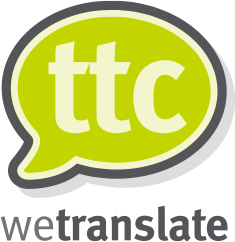How translating a website can expand your global reach
In today’s interconnected world, the potential for business growth knows no bounds. With the power of the internet, businesses have the opportunity to reach customers around the globe. However, language barriers can often hinder this reach and limit a company’s ability to tap into international markets. That’s where website translation comes into play. By translating your website into multiple languages, you can break down these barriers and expand your global reach.
Your brand voice: Energetic and positive
In this fast-paced digital age, businesses are constantly looking for ways to capture the attention of a global audience. One effective strategy for doing so is translating your website into multiple languages. By breaking down language barriers, businesses can connect with customers around the world and tap into new markets.
The importance of website translation
The first step in expanding your global reach is understanding the importance of website translation. In a world where diversity is celebrated, it’s essential to cater to the linguistic needs of your potential customers. By translating your website, you not only make it accessible to a wider audience but also show that you value their language and culture.
Website translation goes beyond mere convenience; it demonstrates your commitment to inclusivity and customer satisfaction. When customers can access your website in their native language, they are more likely to engage with your content, stay on your site longer, and ultimately convert into paying customers. By investing in website translation, you are investing in your brand’s credibility and long-term success in the global market.

Benefits of translating your website
Translating your website opens up a multitude of benefits for your business. Firstly, it allows you to tap into new markets and expand your customer base. By reaching out to customers who may not speak your language, you can significantly increase your chances of attracting international clients. This can lead to higher sales, increased brand recognition, and ultimately, higher profits.
Secondly, website translation can improve your search engine rankings. When your website is available in multiple languages, it becomes more visible to search engines across different regions. This means that potential customers searching for products or services in their native language are more likely to find your website. Improved visibility leads to increased organic traffic and a higher likelihood of conversions.
Lastly, website translation enhances user experience. When customers can navigate your website in their preferred language, they feel more comfortable and engaged. This can lead to increased trust, customer loyalty, and positive word-of-mouth recommendations. By providing a seamless user experience, you strengthen your brand’s reputation and build lasting relationships with customers worldwide.
Common challenges in website translation
While website translation offers numerous benefits, it also comes with its fair share of challenges. One of the main challenges is maintaining consistent brand messaging across different languages. It’s crucial to ensure that your translated content accurately reflects your brand voice and values. This requires working closely with professional translators who understand your brand and can adapt your message effectively.
Another challenge is managing the logistics of website translation. Translating large volumes of content can be time-consuming and expensive. It’s important to plan and prioritise which pages or sections of your website are most critical for translation. Additionally, keeping track of multiple translations and maintaining them as your website evolves can be complex. Utilising translation management tools or working with translation agencies can help streamline the process.
Choosing languages to translate your website into
When deciding which languages to translate your website into, it’s essential to consider your target audience and business goals. Start by researching the languages spoken in your target markets and identifying the most widely used ones. Consider factors such as population size, economic potential, and cultural relevance.
Additionally, consider the languages spoken in countries with high internet penetration rates. While English may be a widely spoken language, there are significant markets where potential customers prefer browsing in their native language. By translating your website into these languages, you can gain a competitive edge and establish a stronger connection with your target audience.
Translating website content: Best practices and considerations
Translating website content requires a strategic approach to ensure accuracy, clarity, and cultural sensitivity. Here are some best practices to keep in mind:
- Work with professional translators who are native speakers of the target language. They possess the linguistic expertise and cultural knowledge needed to provide accurate translations that resonate with your audience.
- Provide translators with context and guidelines for translating your brand-specific terms, slogans, and product descriptions. This helps maintain consistency and ensures your brand message is effectively conveyed across different languages.
- Consider the layout and design of your website when translating content. Languages differ in terms of word length, sentence structure, and direction of reading. Adapting your website layout to accommodate different languages can enhance readability and user experience.
- Proofread and review translated content thoroughly. Mistakes in translation can lead to misinterpretation or confusion among users. Take the time to review translations and make necessary revisions before publishing them on your website.
Localizing your website for different cultures and markets
Website translation is just the first step towards expanding your global reach. To truly connect with customers from different cultures and markets, you need to go beyond translation and embrace localization. Localization involves adapting your website to suit the cultural norms, preferences, and expectations of your target audience.
One crucial aspect of localization is considering cultural nuances and sensitivities. Colors, symbols, images, and even humor can vary greatly across different cultures. By researching and understanding your target market’s cultural context, you can ensure that your website resonates with your audience and avoids any unintentional cultural faux pas.
Another aspect of localisation is customising your website to cater to regional preferences and regulations. This may include adjusting payment options, currency conversions, date and time formats, and shipping information. By providing a seamless and tailored experience, you enhance customer trust and increase the likelihood of conversions.
Tools and resources for website translation
Fortunately, there are numerous tools and resources available to streamline the website translation process. Translation management systems (TMS) provide centralized platforms for managing translation projects, collaborating with translators, and tracking progress. These tools help maintain consistency, automate processes, and ensure efficient communication between all stakeholders.
Machine translation tools, such as Google Translate, can be useful for getting a general understanding of content in different languages. However, they should be used with caution, as they may not always provide accurate translations. It’s advisable to rely on professional human translators for precise and contextually appropriate translations.
Translation agencies and freelance translators are valuable resources for businesses looking to translate their websites. These professionals have the expertise and experience to ensure high-quality translations that align with your brand voice and resonate with your target audience.
Measuring the success of your translated website
To determine the success of your translated website, it’s important to set clear goals and track relevant metrics. Start by defining key performance indicators (KPIs) that align with your business objectives. These may include metrics such as website traffic, conversion rates, average time spent on site, and customer feedback.
Utilize web analytics tools, such as Google Analytics, to track and analyze data related to your translated pages. By comparing the performance of translated pages to their original counterparts, you can assess the impact of website translation on user engagement, conversions, and overall business growth.
Additionally, gather feedback from customers in different languages to understand their experience and identify areas for improvement. Surveys, user testing, and social media monitoring can provide valuable insights into how your translated website is perceived and utilized by your target audience.
Examples of successful website translation and global expansion
Numerous businesses have successfully expanded their global reach through website translation. One notable example is Airbnb, which translated its website and listings into multiple languages to connect with travelers worldwide. By breaking down language barriers, Airbnb opened up new markets and significantly increased its user base.
Another example is Shopify, an e-commerce platform that offers website translation capabilities for businesses selling globally. By providing a seamless multilingual experience, Shopify enables businesses to reach customers in their native languages and drive international sales.
Taking your business beyond borders with website translation
In an increasingly connected world, website translation is a powerful tool for expanding your global reach. By breaking down language barriers and embracing diversity, you can tap into new markets, increase brand visibility, and connect with customers worldwide. However, successful website translation goes beyond mere translation; it involves understanding cultural nuances, tailoring your website to regional preferences, and measuring the impact of your efforts. With careful planning, strategic implementation, and continuous optimization, you can take your business beyond borders and unlock the full potential of global expansion.
So, don’t let language barriers hold you back – start translating your website today and seize the opportunities that await you in the global market!
Request a quote
For more information on our translation services, call us at +44 (0)1245 216930 or contact us to get a free translation quote.

Key benefits of working with us
- Fit for purpose translations
- Avoiding unnecessary costs, preventing excessive charges
- One-stop solutions to save you time
- Free consultation based on 30 years of industry experience
- Professional indemnity insurance to give you peace of mind

